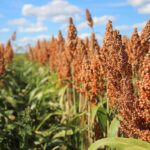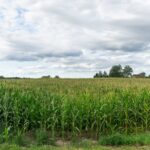When growing gooseberries in South Africa, there are several infections and diseases that you should watch out for. Here are some common ones:
- Powdery mildew (Sphaerotheca mors-uvae):
Powdery mildew is a fungal disease that appears as a white powdery coating on the leaves, stems, and berries. It can stunt growth and reduce fruit quality. To prevent powdery mildew, ensure good air circulation, avoid overhead watering, and apply fungicides if necessary. - Anthracnose (Colletotrichum spp.):
Anthracnose is a fungal disease that causes dark, sunken lesions on the berries. The disease thrives in warm and humid conditions. To prevent anthracnose, practice good sanitation, remove infected plant material, and apply appropriate fungicides. - Botrytis fruit rot (Botrytis cinerea):
Botrytis fruit rot, also known as gray mold, is a fungal disease that affects ripe or overripe berries. It causes a gray, fuzzy mold and can lead to the collapse of the fruit. Avoid excessive nitrogen fertilization, ensure good air circulation, and remove infected berries to control Botrytis. - Aphids (Aphis spp.):
Aphids are small insects that can infest gooseberry plants and suck the sap from the leaves and stems. They can transmit viruses and cause distorted growth. Regularly inspect your plants and control aphids using insecticidal soaps or appropriate insecticides. - Red spider mites (Tetranychus spp.):
Red spider mites are tiny arachnids that feed on the undersides of leaves, causing yellowing, stippling, and eventual leaf drop. They thrive in hot and dry conditions. Increase humidity around the plants, use miticides, and consider biological controls such as predatory mites. - Raspberry beetle (Byturus tomentosus):
Raspberry beetle is a common pest that affects gooseberries as well. The adult beetles feed on the blossoms and the larvae tunnel into the berries, causing them to drop prematurely. Monitor your plants, remove affected berries, and consider using appropriate insecticides.
It’s important to regularly inspect your gooseberry plants for any signs of infections or diseases. Early detection and prompt management are crucial for preventing the spread and minimizing the impact on your crop. Consult with local agricultural extension services or horticultural experts for specific recommendations and best practices in your area.








